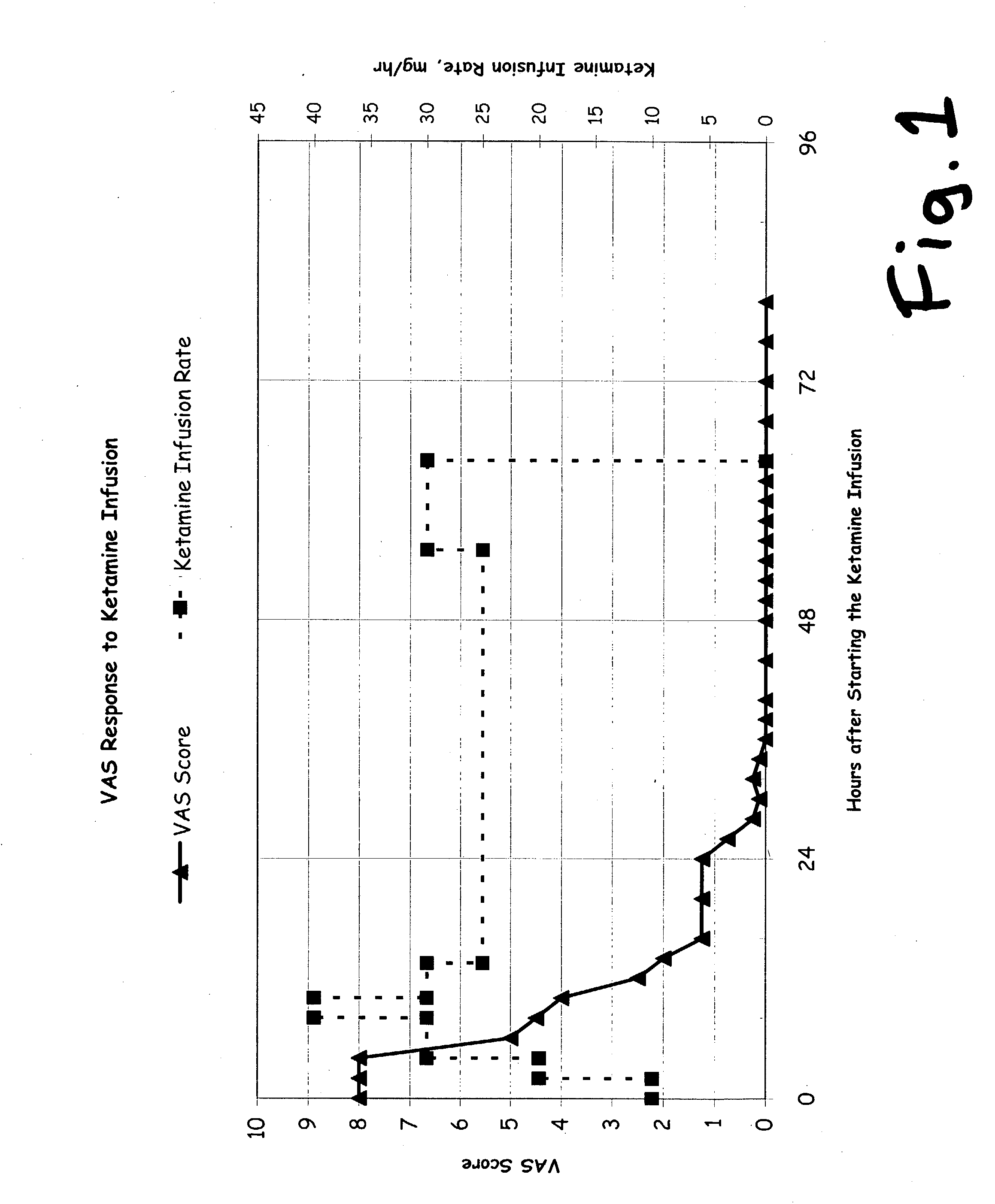Prolonged administration of NMDA antagonist and safener drug to alter neuropathic pain condition
a neuropathic pain and safener drug technology, applied in the field of pain management, can solve the problems of debilitating atrophy and wasting of muscles and other tissues involved, and achieve the effects of reducing neurotoxic side effects, easy demonstration, and inherent safener activity
- Summary
- Abstract
- Description
- Claims
- Application Information
AI Technical Summary
Benefits of technology
Problems solved by technology
Method used
Image
Examples
example 1
Patients Treated in Australia
[0125] About 30 patients have been treated during the span of 1997 through 2002, in Australia, by one of the Inventors herein (Correll), using prolonged infusions of ketamine without any safener drug or magnesium. Those patients enjoyed generally good results, and more than 25 of them were believed to remain generally pain-free (or at least in a state of partial remission which remained substantially better than their condition prior to the treatment), as of the filing date of this application. Those patients have been described in more detail in Correll et al 2004, and more current information on the duration of remission are provided in FIGS. 1 and 2 of that report. That report is not prior art against this invention.
example 2
U.S. Patients with CRPS-Type 1 (RSD)
[0126] The first patient treated in the U.S. is described in some detail in Harbut and Correll 2002. That article was written by two of the inventors herein, and it is not conceded to be prior art. The contents of that article are incorporated herein by reference. That patient enjoyed apparently complete remission for about 18 months, but at that time, an original contributing problem recurred, which led to a second and substantially less intense recurrence of her neuropathic pain problem.
[0127] Four other patients who had suffering from CRPS type 1 for at least two years were subsequently treated in the U.S. Because of patient privacy concerns, the details of their condition cannot be disclosed herein. Typical treatments for these patients commenced with 2 grams of MgSO4 (infused in 5% dextrose in water, or D5W) and 1 or 2 tablets of 0.1 mg clonidine, two or three times per day as tolerated, commencing at least an hour prior to the first ketami...
example 3
Patients with Post-Herpetic Neuralgia (Shingles)
[0131] Several patients were also treated who suffered from post-herpetic neuralgia (commonly known as shingles). One of those patients enjoyed an essentially complete remission, with outstanding results. Certain other patients received transitory and partial benefits.
PUM
| Property | Measurement | Unit |
|---|---|---|
| Time | aaaaa | aaaaa |
| Time | aaaaa | aaaaa |
| Mass | aaaaa | aaaaa |
Abstract
Description
Claims
Application Information
 Login to View More
Login to View More - R&D
- Intellectual Property
- Life Sciences
- Materials
- Tech Scout
- Unparalleled Data Quality
- Higher Quality Content
- 60% Fewer Hallucinations
Browse by: Latest US Patents, China's latest patents, Technical Efficacy Thesaurus, Application Domain, Technology Topic, Popular Technical Reports.
© 2025 PatSnap. All rights reserved.Legal|Privacy policy|Modern Slavery Act Transparency Statement|Sitemap|About US| Contact US: help@patsnap.com

